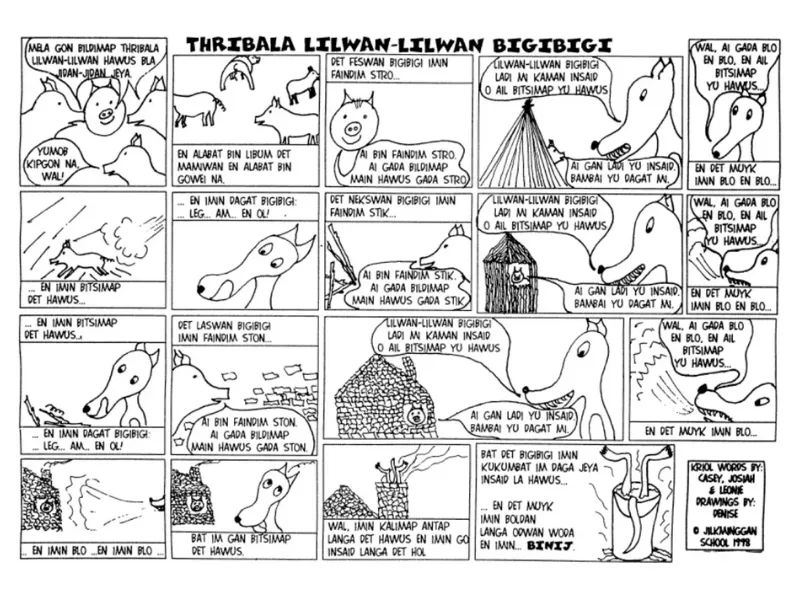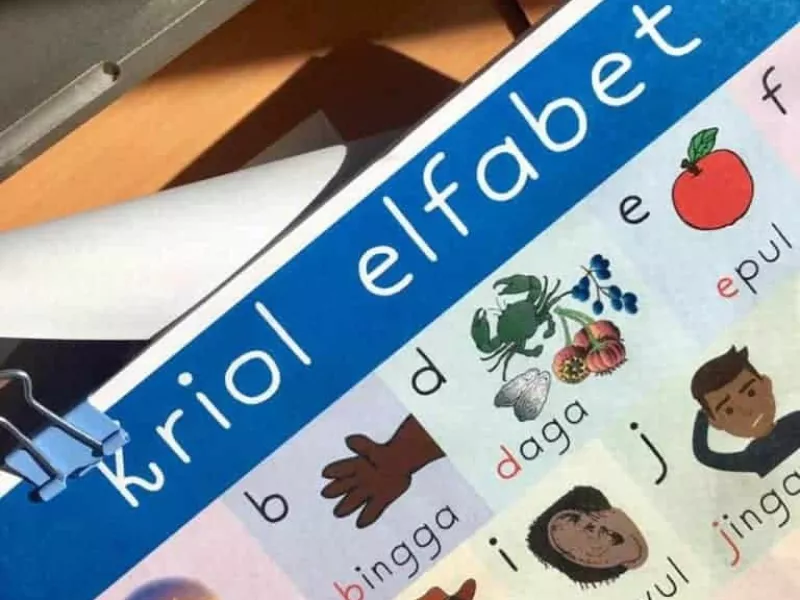Australian Kriol Languages: History, Culture, and Modern Revival
Kriol is Australia’s most widely spoken Indigenous language, with an estimated 20,000–30,000 speakers across the Northern Territory and Western Australia. Developed more than a century ago through contact between Aboriginal communities and English settlers, Kriol has grown into a fully formed creole. It has its own grammar, vocabulary, and cultural identity. Far from being “broken English,” it stands as a powerful symbol of resilience and connection for many Aboriginal communities.
In this guide, we explore the history, linguistic structure, and modern revival of Australian Kriol, and why it remains an essential part of Australia’s cultural landscape today.
Definition and Importance of the Australian Kriol Language

Australian Kriol is an English-based Creoles language that emerged from early contact between Aboriginal Australians and English colonisers. It has developed in Northern Territory Pidgin English. Kriol has finer distinctions, and its speakers use four pronouns to cover just like English speakers use only one. For instance, in Kriol, the word ‘camp’ might be spelled ‘kemp’, and the past tense is often marked by the word ‘bin’ (e.g., ‘Im bin go’ for ‘He went ).
There are actually two varieties of Kriol in Australia such as Roper Kriol (Eastern) and Fitzroy Valley Kriol (Western). Although its vocabulary draws heavily from English, Kriol is distinct from standard English. The Government agencies and Indigenous language translation services also offer interpreting services to preserve the Kriol language. Today, it is widely spoken across the Northern Territory and Western Australia.
The Emergence of Kriol in Indigenous Linguistic History

Kriol emerged in northern Australia during the late 1800s, especially on cattle stations and Christian missions where Aboriginal people from different language groups needed a shared form of communication, contributing to Economic Diversity. A simplified English-based pidgin became common across these regions.
At the Roper River Mission (Ngukurr) in the early 1900s, children grew up speaking this pidgin as their first language. This transformation is called creolisation, which turned the pidgin into a full language that is Kriol. From Ngukurr, Kriol expanded across the Northern Territory languages network, missions, and work routes, eventually reaching the Kimberley region. Over generations, it stabilised and developed into one of the most significant creole languages Australia has today.
Gaining Recognition: Written Kriol

Australian Kriol uses a writing system developed in the 1970s to capture the language’s unique sounds, grammar, and rhythm, which differ greatly from English. Linguists worked closely with Kriol-speaking communities, especially in places like Ngukurr and Bamyili, to create an orthography that was easy for speakers to learn while accurately representing features such as vowel length, consonant clusters, and Kriol-specific grammatical markers.
However, since Kriol is spoken across many regions and there was never a single body officially standardising the orthography, spelling often varies between communities, making it extremely challenging to find Certified NAATI translators. These variations reflect local accents, preferred spellings, and regional identities. Common examples of Kriol spelling show how English-based words adapt to new forms that reflect Kriol pronunciation. For example: “Brother” is pronounced as “broda”. These variations highlight the language’s diversity and cultural richness.
Present Situation of Australian Kriol

Australian Kriol is actually one of the strongest and fastest-growing indigenous languages in the country. Many traditional Aboriginal languages are sadly endangered, but as per Statista 2025, the value of Kriol continues to grow, with the census showing it has the second-highest number of speakers among all Indigenous languages. This makes it an important part of Australia’s linguistic landscape.
People’s views about Kriol, however, are mixed. Some still dismiss it as “broken English,” but this attitude is changing. Many Kriol speakers now feel a growing sense of pride, recognising the language as a key part of their history, culture, and identity. Government agencies, education centres, and NAATI-certified interpreters for Aboriginal and Torres Strait Islander languages are expanding support for Kriol, too.
In 2018, Queensland formally recognised the importance of valuing and using students’ home languages, including Aboriginal English and creoles. Kriol is now increasingly present in schools, community media, and cultural programs, affirming its place in the broad landscape of Northern Territory languages.
Some more examples of Kriol Vocabulary in 2026
In this section, we will discuss the top 4 examples of the Kriol vocabulary that often mess up with AI Localization when human intervention is not present.
1. Garru
Meaning: Child/kid
Example: Dat garru bin ran quick.
(That child ran fast.)
2. Wegim
Meaning: Throw
Example: Wegim dat stik.
(Throw that stick.)
3. Nyarrg
Meaning: Talk/speak
Example: Im nyarrg Kriol la hom.
(He speaks Kriol at home.)
4. Imwan
Meaning: Someone / a person
Example: Imwan bin kam la riba.
(Someone came to the river.)
Future situation of Australian Kriol
The future of Australian Kriol is exceptionally promising. Unlike many traditional languages, Kriol has the most promising growth.
1. Strong Demographic Growth and Youthful Vitality
Kriol is currently the most widely spoken traditional language in Australia. It is actively spoken and learned by children across the Katherine region (NT), the Kimberley (WA), and the Gulf Country.
2. Digital Transformation and AI Integration
Researchers from CoEDL and Google are building AI models using TensorFlow to transcribe Kriol. Therefore, it lays the foundation for future translation tools. Additionally, the Opie robot is already being used in communities like Ngukurr to support early literacy in Kriol.
3. Government Investment and Education Reform (2025–2028)
Federal policies strongly support the future growth of Australian Kriol. The government has allocated $47 million in 2025 to the Indigenous Languages and Arts (ILA) program, along with $53.8 million over four years for community-led language learning initiatives.
Additionally, the Languages Policy Partnership (LPP) has been extended to 2028, ensuring Kriol-speaking communities have a direct voice in shaping language policy and funding decisions. Together, these measures strengthen Kriol’s long-term stability and recognition.
Conclusion
Australian Kriol deserves recognition as a major Australian language because of its deep cultural significance, strong community identity, and remarkable linguistic resilience. As one of the fastest-growing Indigenous languages, Kriol continues to thrive through young speakers, education programs, and increasing media presence. Supporting and valuing Kriol not only preserves an important part of Aboriginal culture but also encourages broader awareness and respect for all Indigenous languages across Australia.
Frequently Asked Questions
Is Australian Kriol the same as Aboriginal English?
No. Australian Kriol is a fully-fledged creole language with its own grammatical rules, while Aboriginal English is a variety of English. Kriol formed during colonisation as a common language for many Indigenous groups and is not “deficient” or “broken English.” Linguists stress it should not be stigmatised, and today it helps non-Indigenous Australians communicate more effectively in parts of northern Australia.
How many dialects of Australian Kriol are there?
Kriol has several distinctive dialects, especially around Ngukurr, Katherine, Barunga, Roper River, and the Fitzroy Valley. These develop naturally when many Indigenous communities form new languages in shared environments, similar to how creoles emerged in places like Haiti or island and cape regions worldwide.
How is Kriol different from traditional Aboriginal languages?
Kriol is a combination of English and Aboriginal languages created during the coloniser era, while languages like Warlpiri are ancient and unrelated. Kriol uses systematically organised grammar, including verb markers such as bin for the past tense. Traditional languages remain diverse, but Kriol has become a dominant and communicative bridge between communities.
Which regions of Australia speak the most Kriol today?
Kriol is widely spoken across the Northern Territory, the Kimberley, and communities around Ngukurr. According to the 2011 Census, it is a dominant home language in several remote communities where Aboriginal children grow up bilingual and use Kriol as their common language.
Is creole the same as Kriol?
Kriol is one type of creole, but not all creoles are the same. A creole is a fully-fledged new language created from the combination of English or other colonial languages with Indigenous tongues. Kriol is Australia’s most widely spoken creole and continues to flourish in parts of northern Australia.
Can Australian Kriol be learned as a second language?
Yes. English speakers and non-Indigenous Australians can learn Kriol as a second language. It has clear grammatical rules, consistent verb patterns, and growing resources. Because it functions as a common language in many communities, learning it supports better communication, cultural understanding, and education for Aboriginal children.







